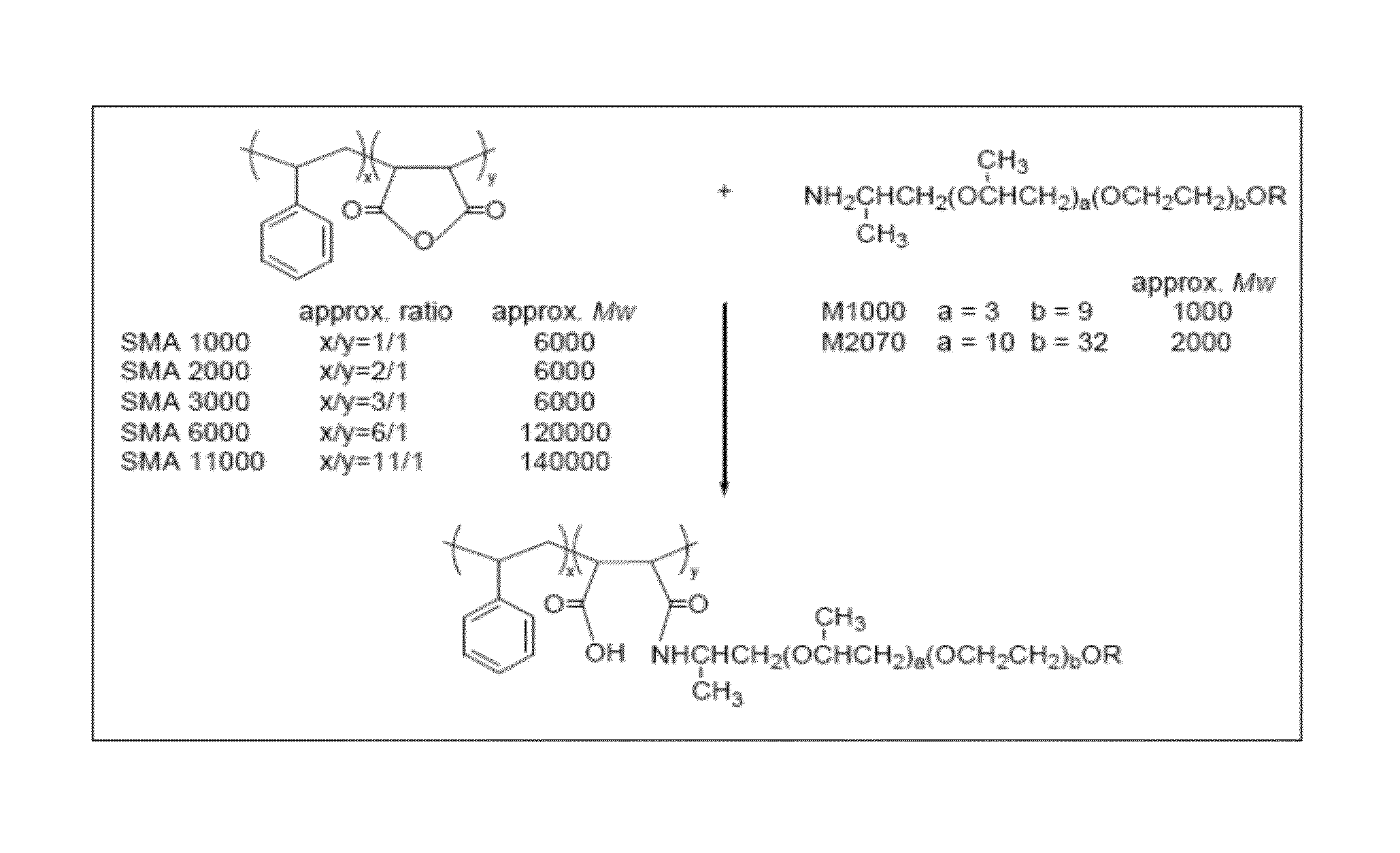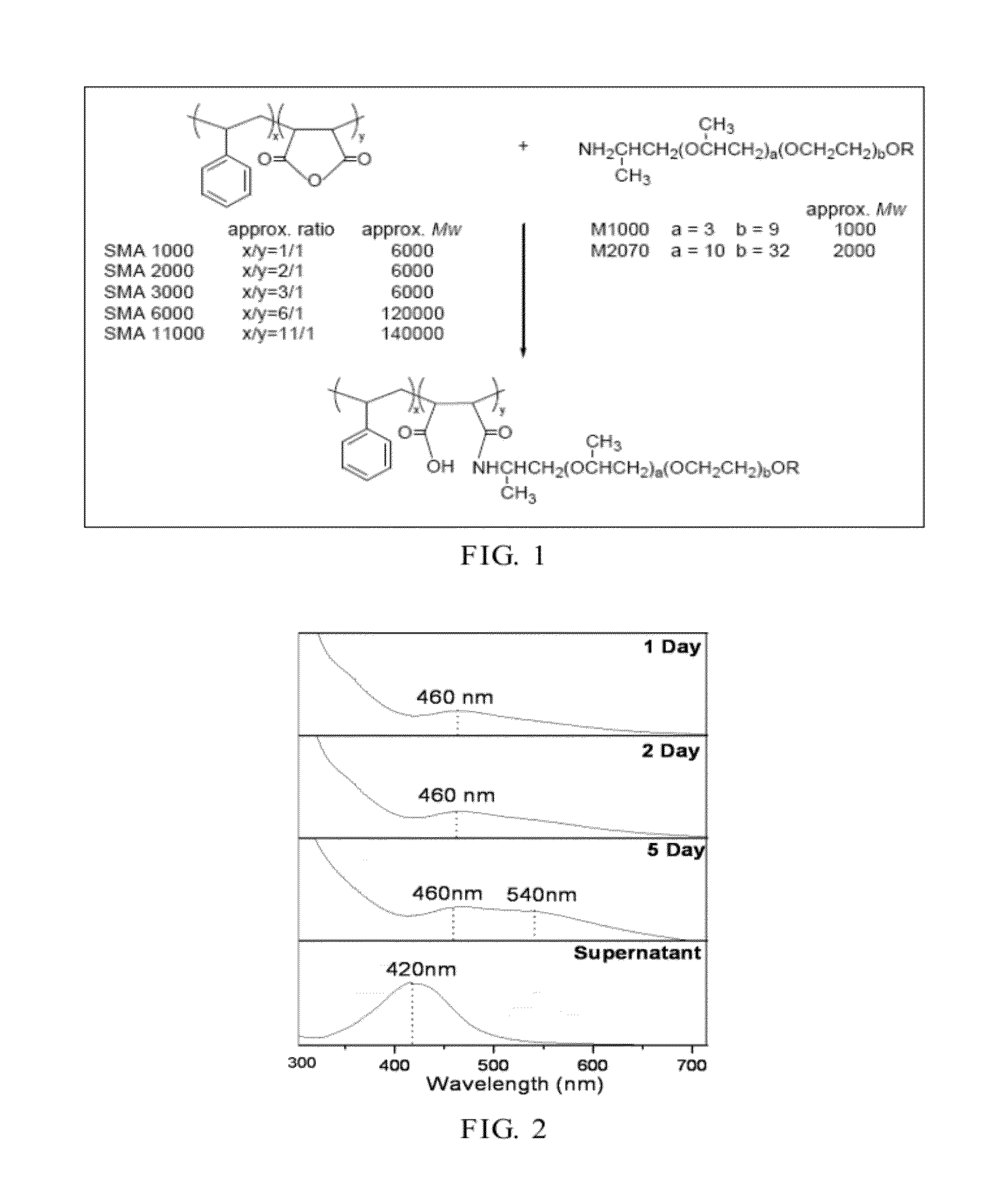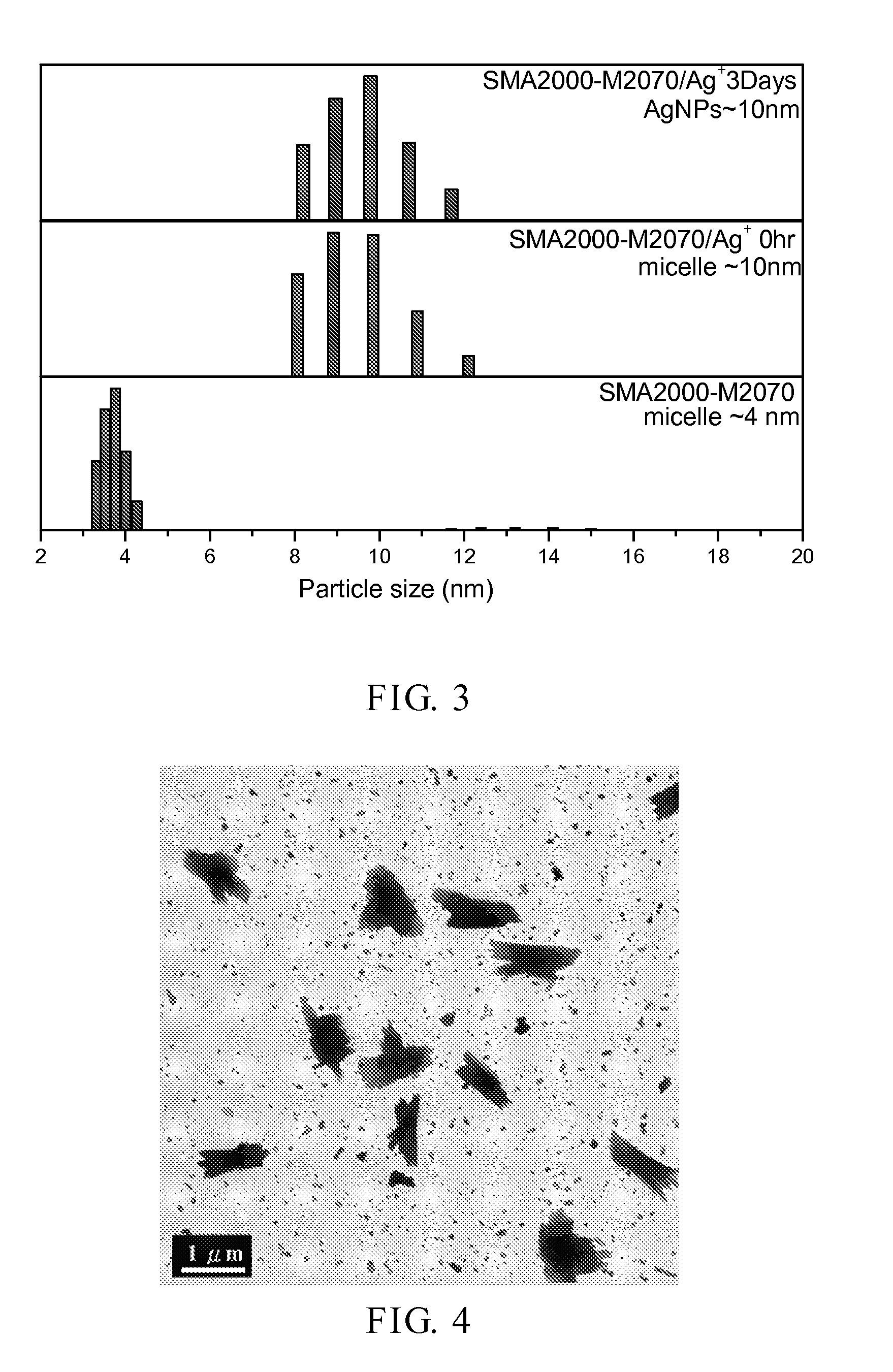Polymeric polymer containing poly(oxyethylene)-amine and application thereof to preparing silver nanoparticle
a polymer and amine technology, applied in the field of polymer polymers, can solve the problems of nanoparticle solutions, nanoparticle solutions, nanoparticle solutions, and high cost of physical methods for high-vacuum vaporization or e-beam
- Summary
- Abstract
- Description
- Claims
- Application Information
AI Technical Summary
Benefits of technology
Problems solved by technology
Method used
Image
Examples
example 1
Step (A) Synthesizing Polymeric Polymer SMA / M2070
[0047]SMA and M2070 were dewatered in vacuum at 120° C. for 6 hours. Then M2070 (130.4 g, 65.2 mmol) was placed in a three-necked bottle, and SMA2000 (10.0 g, including 32.6 mmol MA, dissolved in 50 mL THF) was added therein by several batches. To avoid cross-linking, excess M2070 was added in a double equivalent to SMA. During the reaction, the mixture was sampled for GPC and IR analysis to ensure that cross-linking did not occur. The reaction is shown in FIG. 1. The synthesized polymers were in a mixture which was subsequently separated with a mixed solvent including ethanol and water (or toluene). The unreacted M2070 was dissolved in the mixed solvent and SMA2000-M2070 was precipitated.
Step (B) Synthesizing Silver Nanoparticles
[0048]In a round-bottom flask, SMA2000-M2070 (5 g) was dissolved in water (50 g) and mixed by a magnetic stirrer. AgNO3 (2 g) was then added and lighted with visible light. Through the self-reductive reaction...
example 2
Step (A) Synthesizing Polymeric Amide Copolymer ODPA / ED2003
[0050]In a 100 ml three-necked bottle, THF (10 ml) was added and then ED2003 (10 g, 0.005 mol) was dissolved therein. 4,4′-Oxydiphthalic dianhydride (ODPA) (1.55 g, 0.005 mol) was then added so that the molar ratio of ODPA / ED2003 was 1 / 1. The mixture was mechanically blended and reacted in nitrogen at 30° C. for 3 hours. The mixture was sampled at intervals for IR analysis until the characteristic peak of the anhydride groups disappeared and amide groups generated. After the reaction completed, THF was removed by vacuum filtration and the product ED2003 / ODPA copolymer was a light yellow viscous solid. FIG. 5 shows the reaction. ATTACHMENT 3 shows the solubilities of the ODPA / ED2003 amide copolymer in solvents.
Step (B) Synthesizing Silver Nanoparticles
[0051]ODPA / ED2003 amide copolymer (0.5 g) was dissolved in water (10 g) and then AgNO3 (0.5 g) was added. Through self-reductive reaction of EO segments, the silver nanoparticle...
example 3
[0052]Repeat procedures of Example 2, except that the molar ratio of ODPA / ED2003 was changed as 2:3. ATTACHMENT 3 shows the solubilities of the ODPA / ED2003 amide copolymer in solvents. The silver nanoparticles having good thermal stability in a high concentration were prepared.
PUM
| Property | Measurement | Unit |
|---|---|---|
| time | aaaaa | aaaaa |
| temperature | aaaaa | aaaaa |
| temperature | aaaaa | aaaaa |
Abstract
Description
Claims
Application Information
 Login to View More
Login to View More - R&D Engineer
- R&D Manager
- IP Professional
- Industry Leading Data Capabilities
- Powerful AI technology
- Patent DNA Extraction
Browse by: Latest US Patents, China's latest patents, Technical Efficacy Thesaurus, Application Domain, Technology Topic, Popular Technical Reports.
© 2024 PatSnap. All rights reserved.Legal|Privacy policy|Modern Slavery Act Transparency Statement|Sitemap|About US| Contact US: help@patsnap.com










